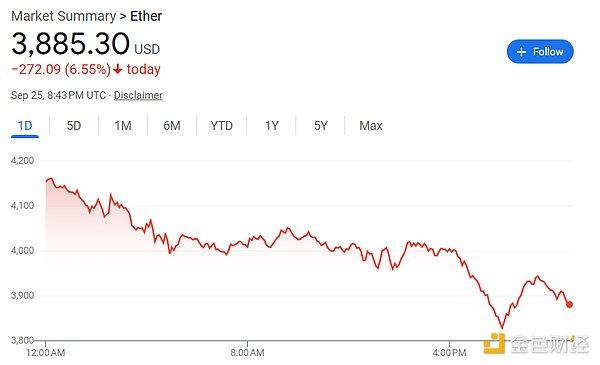
Cryptology is the technology of securing data by converting information into an unintelligible code that only authorized people can decode.
In blockchain, cryptography protects the entire transaction, maintains transparency, prevents fraud and prevents double spending, thereby enhancing the trust of the decentralized ecosystem.
- Cryptography is the foundation of data security in blockchain, including encryption, decryption and hashing.
- There are two main types: symmetric and asymmetric encryption, each suitable for different applications.
- Practical applications include blockchain wallets, digital signatures, and hashing; however, cryptography still has disadvantages in terms of resources and infrastructure.
What is Cryptography?
Cryptography is the science of securing information by converting data into codes that can only be read by the person who possesses the decryption key.
In blockchain, cryptography ensures that transaction data between users, nodes, and Block cannot be tampered with, thereby preventing fraud and protecting information integrity.
Where does Cryptography originate from?
Cryptology has been around for thousands of years, as evidenced by the coded texts on Egyptian tombs around 1900 BC.
The term cryptography comes from the ancient Greek words “kryptos” (hidden) and “graphein” (to write/draw). In 40 BC, Julius Caesar used a cipher to change the characters in his messages, laying the foundation for modern encryption.
“We've been using cryptography to secure information since the time of Julius Caesar to the blockchain era, and it's still about protecting data from the eyes of enemies.”
Bruce Schneier – Security Expert, 2018
What are the types of Cryptography in blockchain?
There are two main types of cryptography: symmetric encryption and asymmetric encryption, applied depending on security needs.
Symmetric uses the same key for both encryption and decryption, while asymmetric separates the two keys: public key and private key, which enhances data security.
What is symmetric encryption?
Symmetric encryption uses the same key to encrypt and decrypt data, often used in internal communication.
In cryptocurrencies, private keys often act as both encryption and decryption keys. This is a common way to protect passwords or other private storage information.
What is asymmetric encryption?
Asymmetric encryption uses two types of keys: a public key for encryption and a private key for decryption, making transactions more secure.
For example: A encrypts a message using B's public key, only B with the private key can decrypt it, like a mailbox that only the owner has the key to open.
“Asymmetric encryption is the foundation of modern blockchains, allowing millions of transactions to take place securely every day.”
Vitalik Buterin – Co-founder of Ethereum, 2020
What is the application of Cryptography in blockchain?
Cryptography is strongly applied in blockchain wallets, digital signatures and hashing, helping users to transact safely and transparently.
Thanks to cryptography, blockchain maintains decentralized trust without the need for intermediaries.
How does a blockchain wallet work?
Blockchain wallets do not contain assets but store private keys, allowing users to decrypt and access assets on the network.
When making a transaction, wallet A uses the public key to encrypt information and sends it to wallet B. Then, wallet B uses the private key to decrypt, ensuring data security.
What is the Vai of digital signature?
Digital signature is a transaction verification tool, based on private key to encrypt and authenticate ownership.
Similar to passwords and OTP codes in banking, digital signatures in blockchain help prevent forgery, ensuring the integrity and transparency of transactions.
“Digital signatures are key to giving blockchain users confidence that transactions really belong to them.”
Andreas Antonopoulos – Author “Mastering Bitcoin”, 2019
How is Hashing used?
Hashing is a one-way form of encryption that converts data into a chain of characters, for example Bitcoin 's SHA-256 algorithm.
Hashing helps blockchain process huge amounts of data while saving resources, while also preventing modification of the original data.
What are the advantages of Cryptography in blockchain?
Cryptography brings high security, scalability and immutability to blockchain transactions.
Digital signatures prevent third-party interference, while hashing makes transactions faster and more efficient.
| Advantage | Meaning |
|---|---|
| High security | All transactions are encrypted, making them difficult to hack. |
| Scalability | Data is protected as the network processes multiple transactions. |
| Invariant | Digital signatures ensure that data cannot be modified. |
What are the disadvantages of Cryptography?
Despite its power, cryptography is limited by infrastructure and resource costs.
If the blockchain is 51% Attack, cryptography cannot prevent the transaction history from being changed. Additionally, encryption and decryption are energy- and time-consuming.
“Cryptographic security is a strong defense, but it is no substitute for a blockchain infrastructure that is designed to be secure from the start.”
Don Tapscott – CEO Blockchain Research Institute, 2021
Frequently Asked Questions
Is Cryptography in Blockchain Mandatory?
Yes, as it is the core security layer that maintains transparency and prevents transaction fraud.
How are symmetric and asymmetric encryption different?
Symmetric uses a single key, while asymmetric separates the public and private keys for increased security.
Why is hashing important in Bitcoin?
Hashing with the SHA-256 algorithm helps Bitcoin secure data and prevent Block editing.
Does blockchain wallet store assets?
No, blockchain wallet only stores private keys, while assets exist on the blockchain network.
Can Cryptography Prevent 51% Attack ?
No, because 51% Attack come from computational power, which is beyond the scope of cryptography security.








